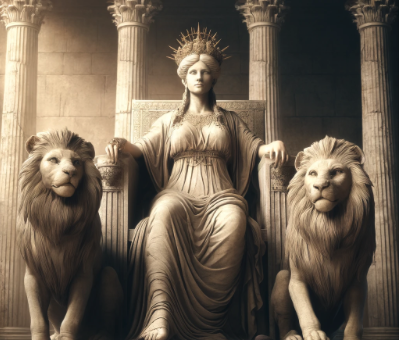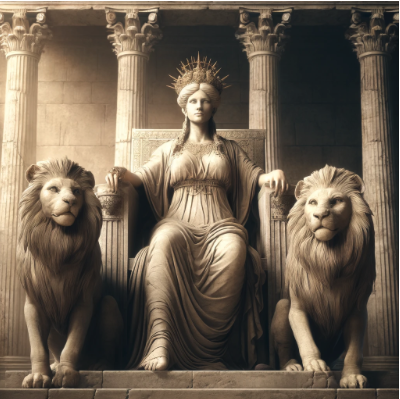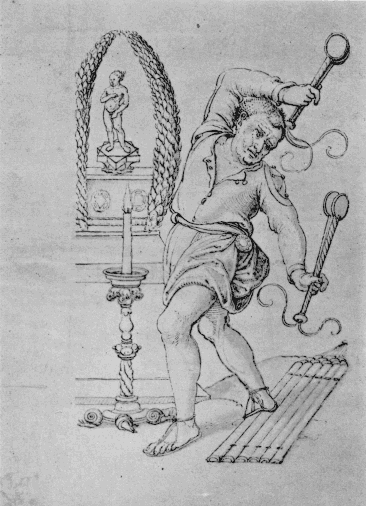
The term “Magna Mater,” which translates to “Great Mother” in Latin, has both historical and mythological significance, and was a significant aspect of ancient Roman religion.
It refers to the goddess Cybele, a goddess of fertility, motherhood, and the wild nature. She was originally worshipped in Phrygia, an ancient region in Anatolia (modern-day Turkey). Her worship was later adopted by the Romans.
Cybele, or the Magna Mater, was considered the mother of all gods and the embodiment of the Earth in its wild and untamed form. She was often depicted in art as a matronly figure riding a lion or in a chariot drawn by lions, symbolizing her dominion over nature and animals.

The cult of Cybele was officially brought to Rome during the Second Punic War against Carthage in the late 3rd century BCE, in response to a prophecy in the Sibylline Books. The Romans believed that importing the worship of the Magna Mater from Phrygia would help them in their war efforts.
A meteoric stone, interpreted as the goddess’s image, was brought from Pessinus (in modern-day Turkey) to Rome, and her cult was established on the Palatine Hill.
Barbara G. Walker (The Woman’s Encyclopedia of Myths and Secrets, 1983) writes,
“Her temple stood on the Vatican, where St. Peter’s basilica stands today, up to the 4th century A.D. when Christians took it over. She was one of the leading deities of Rome in the heyday of the mystery cults, along with Hecate and Demeter of Eleusis.” (p. 201)
Her festivals, notably the Megalesia in April, featured music, parades, plays, and games, reflecting both her nature as a deity of ecstatic and frenzied worship and her role in ensuring the city’s security and prosperity.

The Galli, her eunuch priests, performed wild dances and rituals in her honor, and her worship included rites of mourning and rejoicing that symbolized death and rebirth.
Over time, the figure of Magna Mater became syncretized with other mother goddess figures in different cultures, representing the universality of the Earth Mother archetype. Her worship reflects ancient peoples’ reverence for the natural world and its cycles of growth, decay, and renewal.


1 thought on “Understanding the Meaning of Magna Mater and the Goddess Cybele”
Comments are closed.